Barbecuing a whole chicken sounds simple enough—throw the bird on the grill, flip it a few times, and let the flames do their thing, right? Not quite.
If you’ve ever ended up with a charred outside and raw center (or worse, a dried-out bird that tastes like grilled cardboard), you’re not alone. Barbecuing an entire chicken is a test of patience, technique, and respect for the bird.
But when done right? It’s absolute perfection: juicy, smoky, tender meat wrapped in crisp, golden skin that practically begs to be devoured.
We’re not talking about slapping some BBQ sauce on and hoping for the best. This is the art of cooking a whole chicken the right way—according to someone who actually knows what they’re doing. That means no shortcuts, no guesswork, and definitely no “winging it” (pun intended).
Whether you’re a backyard BBQ warrior or a curious beginner tired of playing chicken roulette, this guide will walk you through the expert-approved process that turns an average bird into a showstopping centerpiece.
From picking the perfect chicken to setting up your grill like a seasoned pitmaster, we’re diving deep into everything you need to know.
We’ll cover prep techniques, brining secrets, seasoning strategies, grill setup, and those game-changing pro tips that separate the good from the unforgettable.
If you’ve ever dreamed of serving a perfectly barbecued whole chicken that gets people talking long after the last bite—this is your playbook.
1. Choosing the Right Chicken
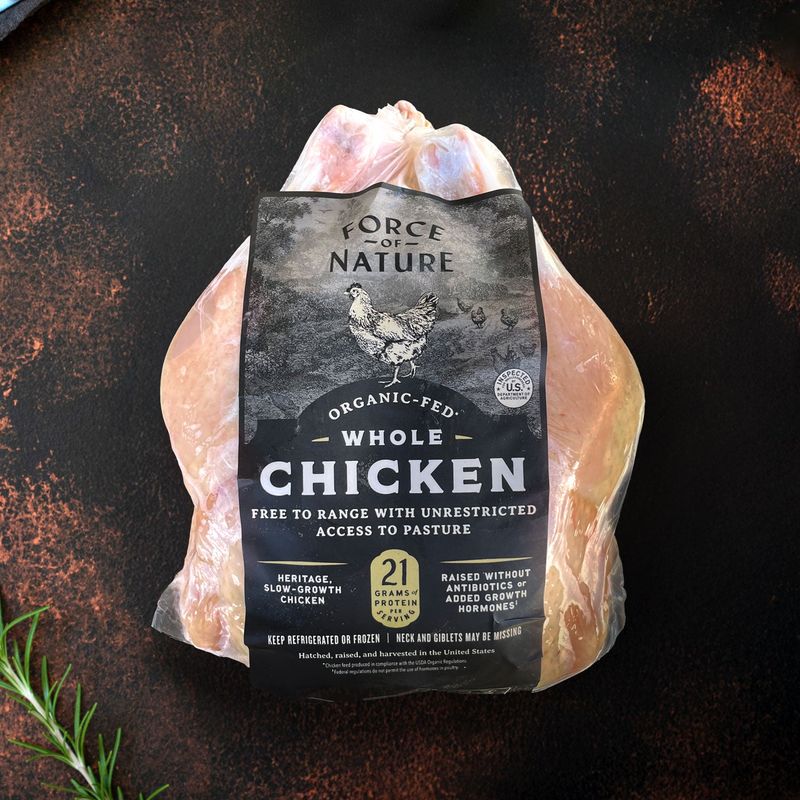
When it comes to barbecuing a whole chicken, size does matter. Opting for a 3.5-4 lb bird ensures even cooking and rich flavor distribution. While organic chickens are generally more flavorful and less fatty, conventional birds can be just as delightful if cooked properly.
Ensuring the bird has its skin on is crucial, as the skin serves as a natural moisture barrier and adds a layer of crispy goodness once grilled.
Make your choice based on your flavor preference and budget, but remember that the skin is not negotiable for that authentic barbecue taste. Whether organic or conventional, a well-sized bird with skin-on promises a delicious start to your barbecue journey.
2. Prepping the Chicken
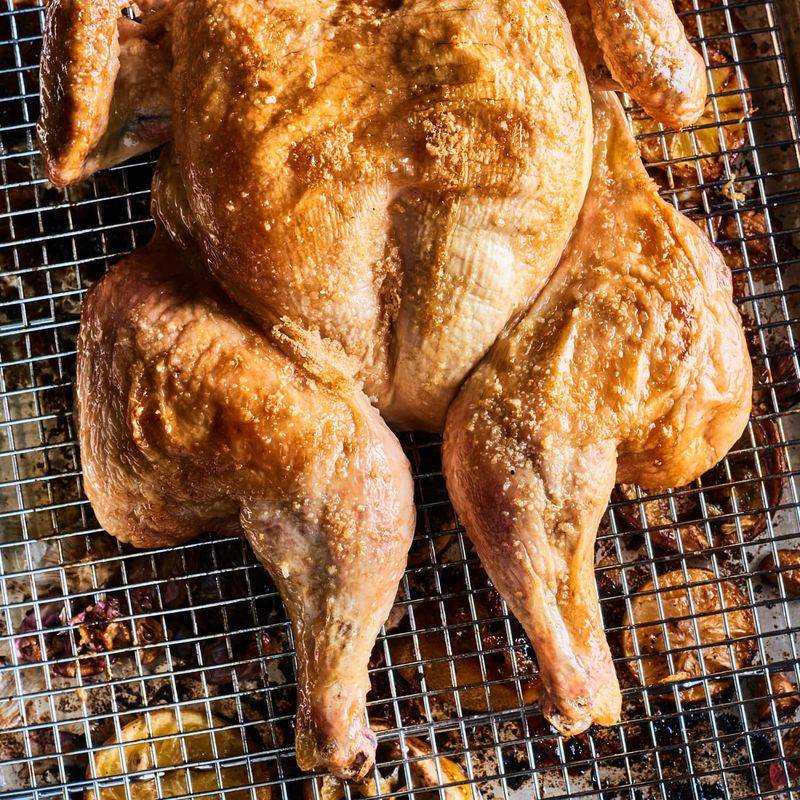
Prepping the chicken is a step you can’t afford to skip. A well-prepared bird ensures flavors are locked in and the cooking process is efficient. Start by cleaning the chicken thoroughly and patting it dry with paper towels. Trimming any excess fat or skin can prevent flare-ups and unwanted char.
The spatchcocking method, where you remove the backbone to flatten the bird, allows for even cooking and faster grill time. However, keeping the chicken whole can infuse more smoke flavor and maintain juiciness.
The choice between spatchcocking or cooking the bird whole depends on how you want your final dish to taste and feel.
3. The Importance of Brining
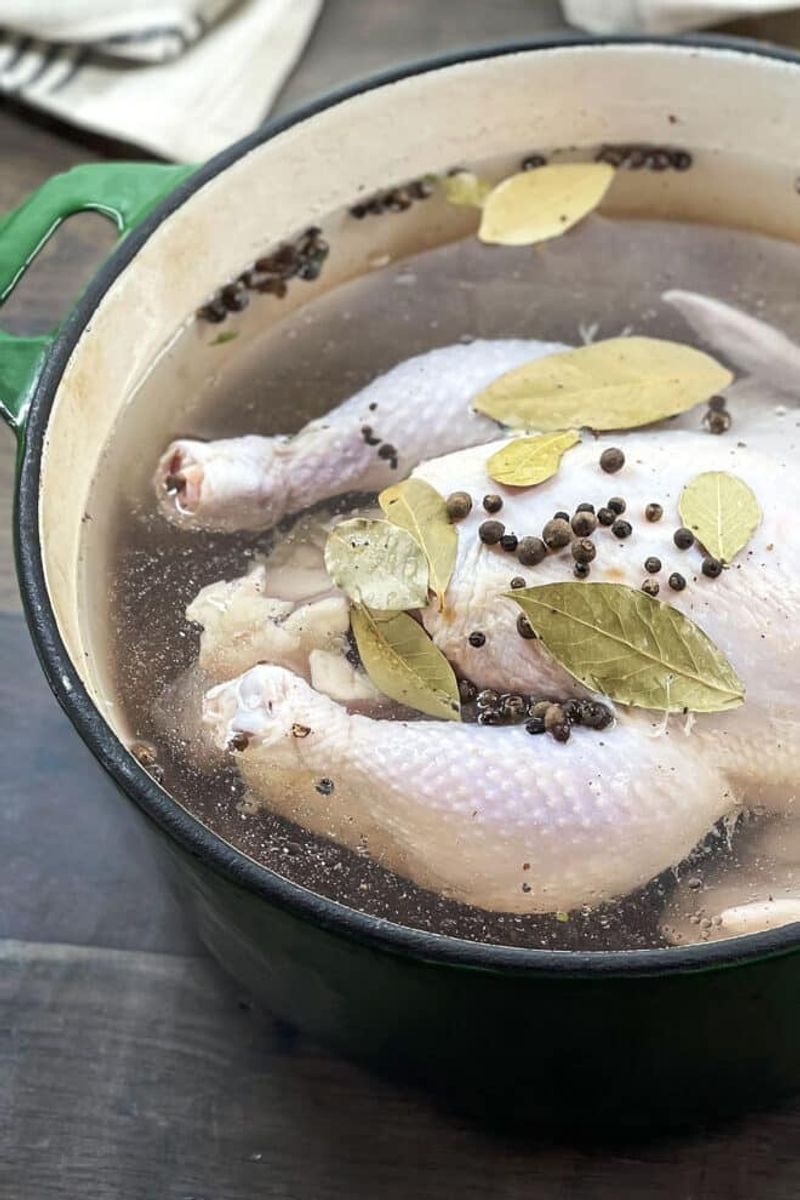
Brining is the secret weapon in achieving a juicy and flavorful chicken. Whether you choose wet or dry brine, both methods enhance the bird’s moisture retention and flavor profile. Experts often lean towards a wet brine for its thorough flavor penetration.
Brining time is critical; a good rule of thumb is to allow the chicken to soak for at least 12 hours, but not more than 24. This process ensures the meat is tender and seasoned to perfection. For those new to brining, a simple recipe involves water, salt, sugar, and your choice of herbs and spices.
Embrace this step, and your chicken will thank you with every bite.
4. Seasoning Like a Pro
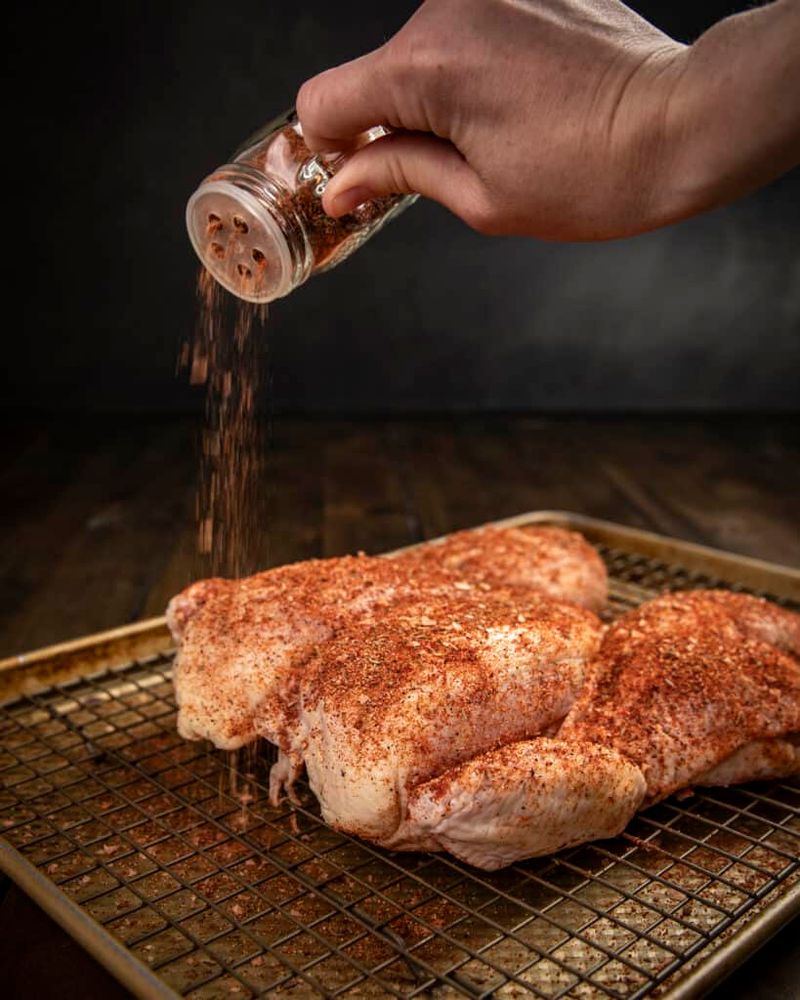
Seasoning is more than just a sprinkle of salt and pepper—it’s an art form. Expert pitmasters recommend a dry rub composed of salt, paprika, garlic powder, and black pepper as a great starting point. Layering flavors with herbs, spices, and even citrus can elevate the taste profile significantly.
Apply the seasoning generously and evenly, rubbing it under the skin and inside the cavity for maximum flavor penetration. The timing is key; it’s best to season the chicken an hour before grilling to let the flavors meld together. This simple yet effective technique will transform your chicken from ordinary to extraordinary.
5. Setting Up the Grill
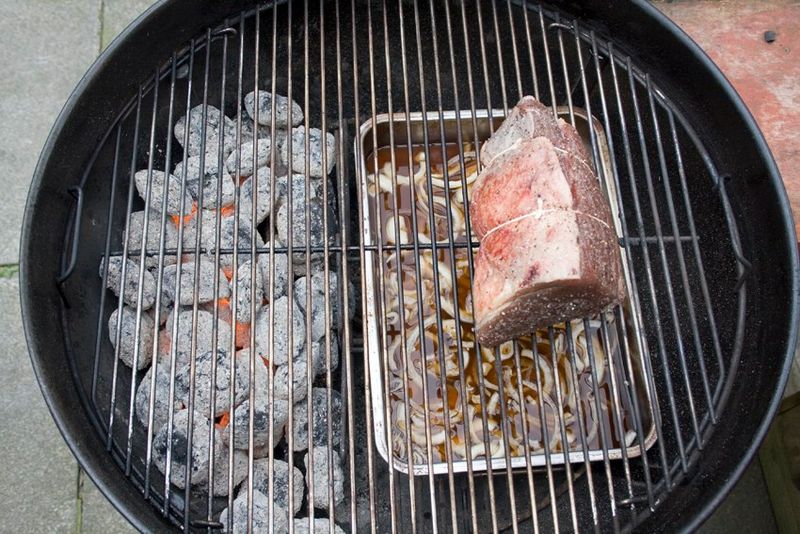
A well-set grill is like a well-tuned instrument, essential for perfect cooking. Charcoal grills imbue a smokier flavor, while gas grills offer convenience and control. Experts often advocate for charcoal if authentic barbecue flavor is your aim.
Creating indirect heat zones is crucial. By placing coals or burners on one side, you allow the chicken to cook evenly without direct flames. Adding wood chips can introduce a smoky aroma that enhances the overall taste.
Whether you go for charcoal or gas, mastering the grill setup will set the stage for a successful barbecue.
6. Tools You’ll Need
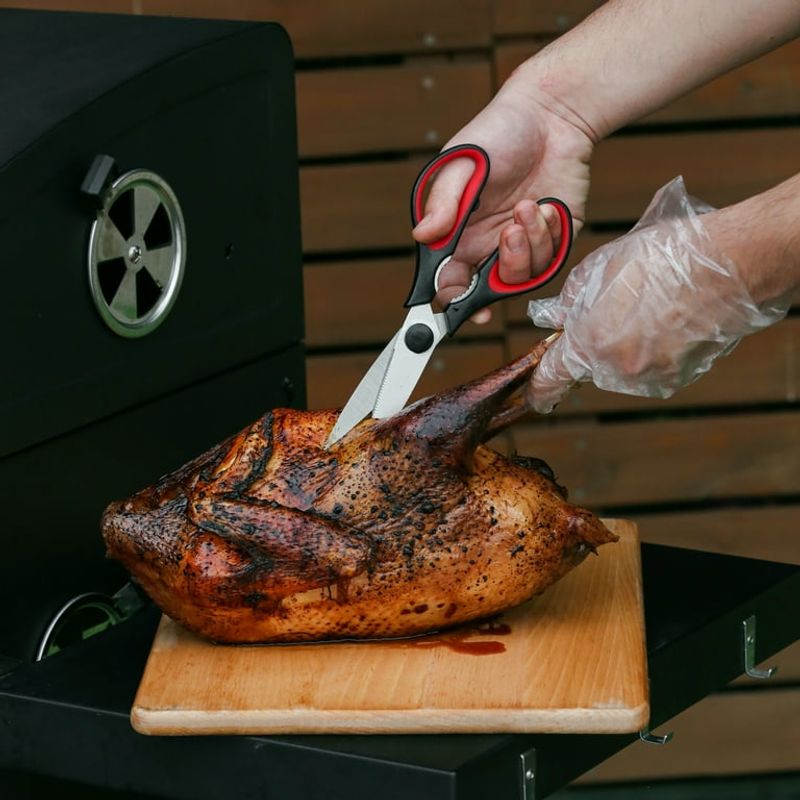
Every artisanal process requires the right tools, and barbecuing is no different. A meat thermometer is indispensable for checking doneness without guessing. Kitchen shears, especially if spatchcocking, make preparation smoother.
Gearing up with grill gloves and tongs ensures safety and ease of handling, while a drip pan collects juices to prevent flare-ups. Lastly, a basting brush or spray bottle is perfect for adding moisture without disturbing the rub.
Having these tools at the ready will not only make the process seamless but also enhance your confidence as a barbecue host.
7. Cooking Technique
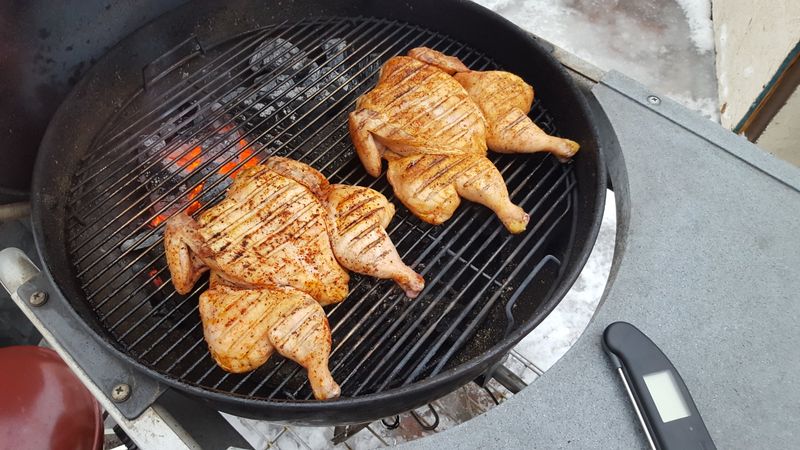
Grilling a whole chicken is an exercise in precision and patience. Indirect heat is the go-to method, ensuring even cooking without scorching the skin. Positioning the bird with the legs pointing towards the heat source helps the thicker parts cook thoroughly.
Time and temperature are your guiding stars—at 375°F, plan for about 1.5 hours of grilling. This approach gives the skin a delightful crispness while keeping the meat tender and juicy. Sticking to these guidelines will turn your barbecue into a culinary triumph.
8. Basting & Moisture Control
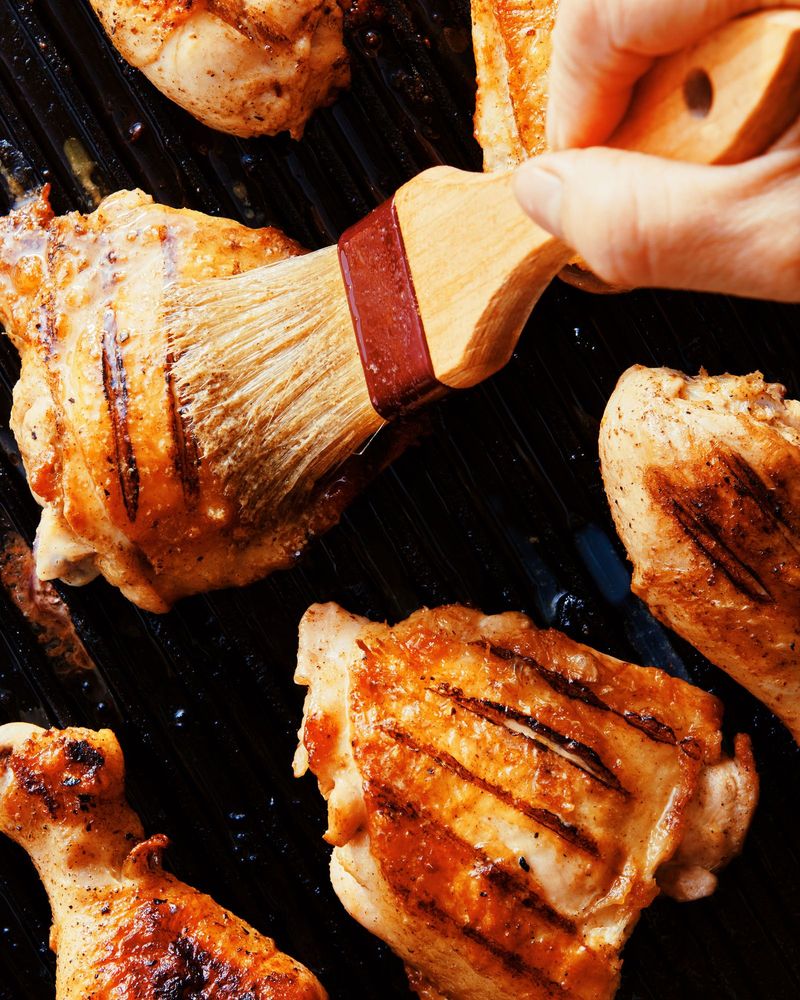
Basting is the unsung hero of a juicy barbecue chicken. Timing is everything; begin basting about halfway through the cooking process to maintain moisture without washing away the rub. A butter-based baste adds richness, while a vinegar-based one offers a tangy zest.
However, over-basting can lead to a soggy skin, so restraint is key. The goal is to build layers of flavor and moisture without compromising texture. With the right basting technique, every bite of your chicken will be a journey into succulent flavors.
9. Checking for Doneness
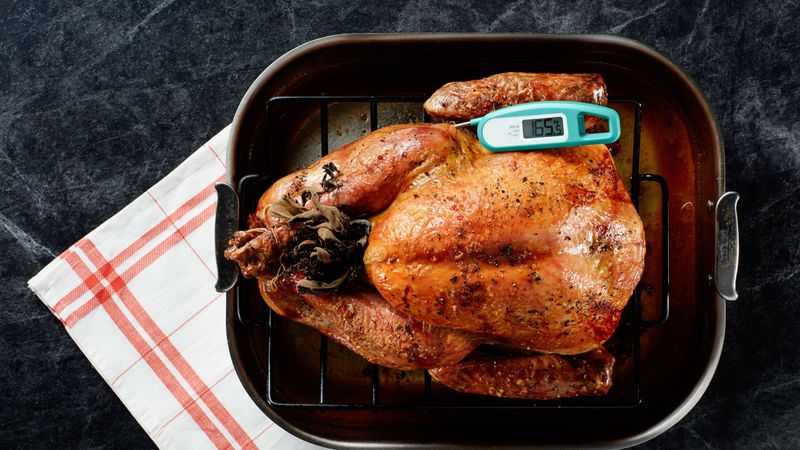
Doneness is where precision meets anticipation. An internal temperature of 165°F in the thickest part of the chicken indicates it is safe to eat. Allow the juices to run clear as a visual confirmation of doneness.
Using a meat thermometer ensures accuracy without guesswork. Insert it gently to avoid piercing too much and losing precious juices. This simple step guarantees your chicken is not only safe but also deliciously cooked to perfection.
10. Resting Before Serving
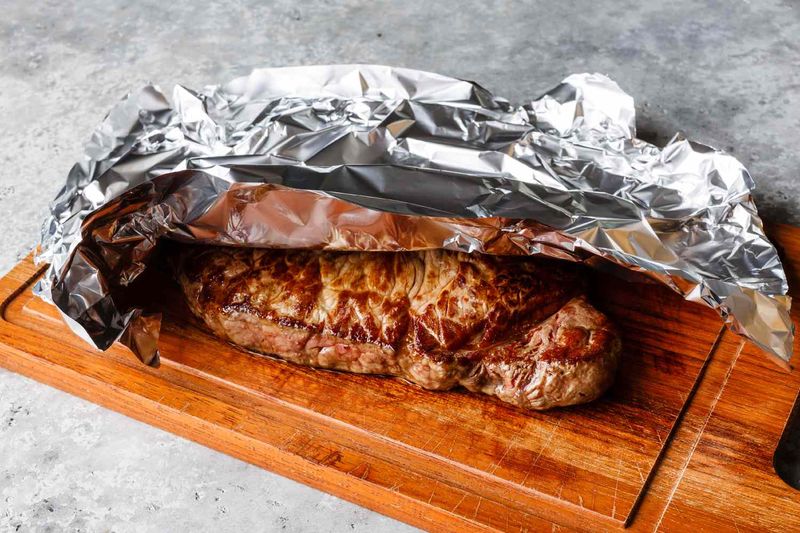
Resting is the magical pause that allows flavors to settle and juices to redistribute. Letting the chicken rest for 10-15 minutes after grilling is crucial for retaining moisture and enhancing taste.
While tenting with foil can help retain heat, be cautious not to trap steam, which can soften the crispy skin. This downtime is where patience pays off, ensuring every bite is as flavorful as it can be.
11. Carving Tips from a Chef
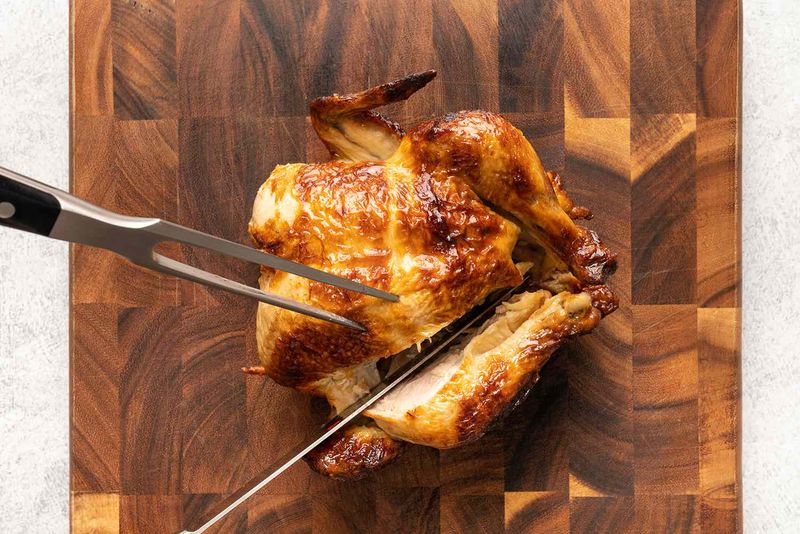
Carving transforms a whole chicken into a feast. The right tools, like a sharp knife and carving fork, make all the difference. Begin by removing the legs and thighs, then the wings, and finally the breast meat.
Arranging the pieces attractively on a platter elevates your presentation, making it visually appealing. This methodical approach not only ensures even portioning but also impresses guests with culinary flair.
12. Expert Pitmaster’s Pro Tips
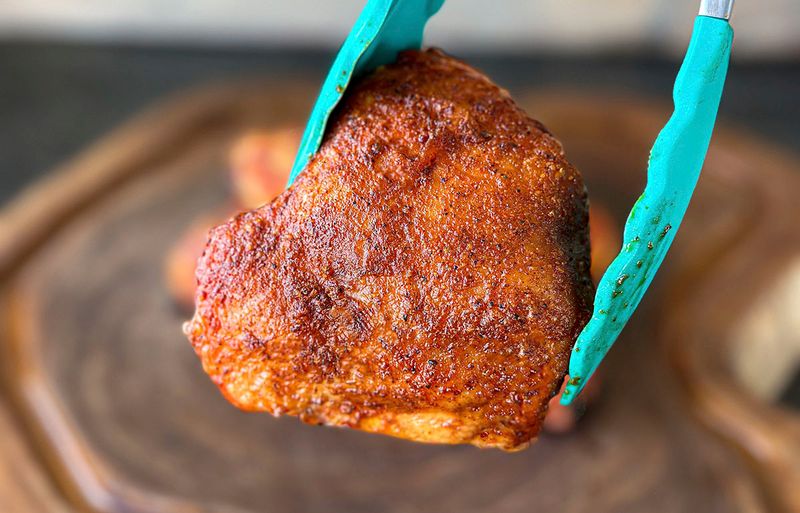
Secrets from the pros can elevate your barbecue game. A “secret” ingredient like a dash of smoked paprika can add depth to your rub. Avoid common mistakes like overcrowding the grill, which can lead to uneven cooking.
For crispy skin without burning, experts recommend maintaining consistent heat and occasionally spritzing the chicken with a vinegar-based spray. These nuggets of wisdom ensure your chicken is not only well-cooked but memorable.
Leave a comment